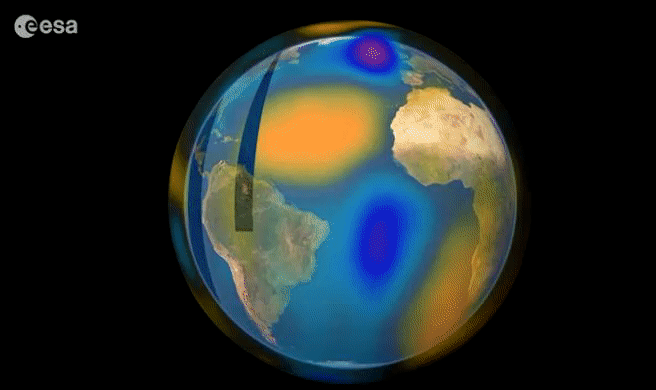The most detailed map ever of the tiny magnetic signals generated by Earth’s lithosphere compiled after four years of measurements from ESA’s trio of Swarm satellites. Image: ESA/Planetary Visions
Scientists assembling for an ESA scientific conference have been amazed by new findings on how our oceans influence our planet’s magnetic field.
There are many, many mysteries left to be solved about our planet, but arguably the biggest one – from the perspective of scale – is our planet’s magnetic field.
While we have a firm understanding of the basics, how it changes over time and why has continued to elude us – at least until a new discovery made by a trio of Swarm satellites operated by the European Space Agency (ESA).
Launched in 2013, the satellites were designed to, from orbit, peer beneath our planet’s surface and analyse its core dynamics and core-mantle interaction as well as the magnetism of the lithosphere and its geological context.
The results presented to this year’s European Geosciences Union meeting in Vienna focused on how the magnetic field is influenced by our planet’s oceans.
While the magnetic field is created largely by an ocean of superheated, swirling liquid iron in the planet’s outer core, other factors – such as magnetised rocks in the crust and the flow of the ocean – also affect the field.
Extremely accurate measurements
When interacting with the magnetic field, the salty oceans of our planet produce an electric current, which in turn produces a magnetic field.
However, because the field generated by this process was so small, it was extremely difficult to measure its influence until the introduction of Swarm.
“We have used Swarm to measure the magnetic signals of tides from the ocean surface to the seabed, which gives us a truly global picture of how the ocean flows at all depths – and this is new,” said Nils Olsen from the Technical University of Denmark, who was involved in the latest findings.
“Since oceans absorb heat from the air, tracking how this heat is being distributed and stored, particularly at depth, is important for understanding our changing climate.”
He continued: “In addition, because this tidal magnetic signal also induces a weak magnetic response deep under the seabed, these results will be used to learn more about the electrical properties of Earth’s lithosphere and upper mantle.”
You can watch the full 3D model of the findings on ESA’s website.
